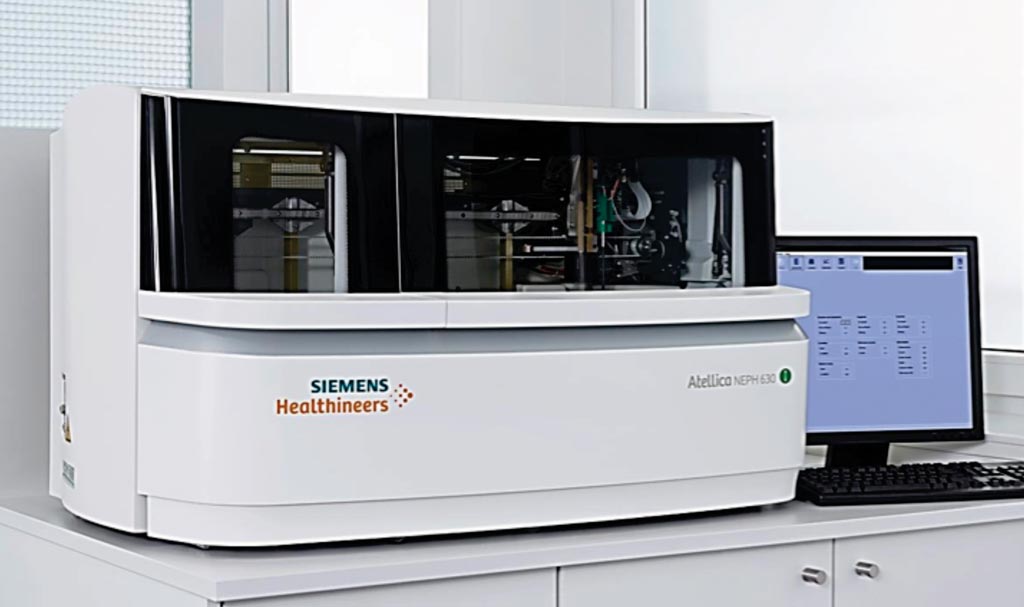C-Reactive Protein Assessed for Albuminuria Severity
By LabMedica International staff writers
Posted on 21 Feb 2018
Diabetes is a major cause of early morbidity and mortality in the world and is the leading cause of renal failure, non-traumatic amputations and blindness in adults. Chronic hyperglycemia causes irreversible structural and functional changes in cells leading to the development of microvascular and macrovascular complications.Posted on 21 Feb 2018
C-reactive protein is one of the most sensitive markers of subclinical inflammation, and its serum concentration is an indicator of intensity of low-grade chronic inflammation of the arterial wall. Measurement of total albuminuria in 24-hour urine is the gold standard for early detection of nephropathy and its prevention and the most sensitive prognostic factor for assessing the risk of developing clinical nephropathy.

Image: The Nephelometer analyzer BN II (Photo courtesy of Siemens Healthcare).
Scientists at Cantonal Hospital Zenica (Zenica, Bosnia and Herzegovina) and their colleagues carried out a prospective study included 69 patients with diabetes mellitus type 2 (T2DM), both sexes (24 males, 45 females), aged 30-82 years. They were divided into two groups: 40 patients with T2DM and normoalbuminuria (T2DM-NA); and 29 patients with T2DM and microalbuminuria (T2DM-MA). Patients were hospitalized at the Department of Internal Medicine, Cantonal Hospital Zenica, in the period January-April 2014.
Biochemical analyses were performed for serum creatinine, urea, high sensitive C-reactive protein (hsCRP), and albumin in 24-hour urine samples. Immunonephelometry measurement of hsCRP was performed on the Nephelometer Analyzer BN II. The 24 urinary albumin measurements were performed using immunoturbidimetric method (PETINIA), and the HbA1c was measured by turbidimetric inhibition immunoassay (TINIA) and an analysis was performed using the Siemens’ Dimension Clinical Chemistry System analyzer.
The team reported that the frequency of patients in T2DM-NA and T2DM-MA groups was not significantly different in relation to sex and age. There was significant difference in relation to duration of diabetes. The mean glucose and HbA1c levels were significantly higher in T2DM-NA group comparing to T2DM-MA group. Serum creatinine, urea and hsCRP were significantly higher in T2DM-MA group compared to T2DM-NA group. Urinary albumin showed significantly positive correlation with the hsCRP, urea and creatinine. A one unit (mg/L) increase in hsCRP concentration was associated with 11.5% increase of odds of microalbuminuria.
The authors concluded that significantly higher values of serum hsCRP in patients with type 2 diabetes mellitus and microalbuminuria in comparison to those with normoalbuminuria as well as the correlation of values of inflammatory marker with urinary albumin implicate a low-grade inflammation in the progression of diabetic nephropathy. The study was published on February 1, 2018, in the journal Medicinski Glasnik.
Related Links:
Cantonal Hospital Zenica














